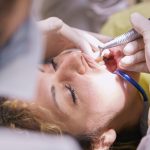EuroPerio10, the world’s leading congress in periodontology and implant dentistry organised in Copenhagen on 15-18 June by the European Federation of Periodontology (EFP), was the most exciting EuroPerio yet.
Professor Phoebus Madianos, chair of EuroPerio10, said: “EuroPerio attracts the best speakers, scientists, and clinicians from around the world to the Olympic Games of dental congresses. This is the main event organised by the EFP and the growing success of EuroPerio is mainly due to the scientific programme which delivers the present and future in the science and practice of periodontology and implant dentistry.”
Key stats:
· More than 7,000 participants from 110 countries.
· 66% of participants under 45 years of age and 33% under 35 years.
· Original research presented in over 900 scientific abstracts.
· 41 scientific sessions on emerging issues of interest for practitioners, scientists and academics.
· Over 130 top speakers from more than 30 countries.
· 50% less printed materials than EuroPerio9.
Research was presented on novel topics such as the role of artificial intelligence in the diagnosis and treatment of periodontitis. New evidence was revealed on previously investigated areas including the links between gum disease and heart conditions, diabetes, premature birth and lung function, and the long-term outcome of periodontal treatment. Plus: the first European guideline on how to treat advanced (stage IV) periodontitis.
Professor Andreas Stavropoulos, EFP president, said: “The EFP is the global benchmark in gum health and gum diseases. The main mission of the EFP is to raise awareness about the importance of gum disease and gum health, and our motto is periodontal health for a better life. This is what we communicate to society and to politicians so that we can influence decision making and improve oral health. Our main educational activity is EuroPerio, and this edition has attracted a very young audience, which clearly indicated the interest in periodontology of the young generation of colleagues. While this edition has now closed its doors, we look forward to seeing the dental community at EuroPerio11 from 14 to 17 May 2025 in Vienna, Austria.”
EFP, global benchmark in periodontology
The European Federation of Periodontology (EFP, ww.efp.org) is a non-profit organisation dedicated to promoting awareness of periodontal science and the importance of gum health. Its guiding vision is “periodontal health for a better life.”
Founded in 1991, the EFP is a federation of 37 national periodontal member societies that represents more than 16,000 periodontists, dentists, researchers, and oral-health professionals from Europe and around the world. It supports evidence-based science in periodontal and oral health, and it promotes events and campaigns aimed at both professionals and the public.
The EFP organises EuroPerio, the world’s leading congress in periodontology and implant dentistry, as well as other important professional and expert events such as Perio Master Clinic and Perio Workshop. The annual Gum Health Day on May 12, organised by the EFP and its member societies, brings key messages on gum health to millions of people across the world.
The EFP also organises workshops and outreach campaigns with its partners: projects to date have covered the relationship between periodontal disease and diabetes, cardiovascular disease, and caries, as well as women’s oral health during pregnancy.
The EFP’s Journal of Clinical Periodontology is the most authoritative scientific publication in this field. The federation also publishes JCP Digest, a monthly digest of research, and the Perio Insight magazine, which features experts’ views and debates.
The EFP’s work in education is also highly significant, notably its accreditation programme for postgraduate education in periodontology and implant dentistry.
The EFP has no professional or commercial agenda.









